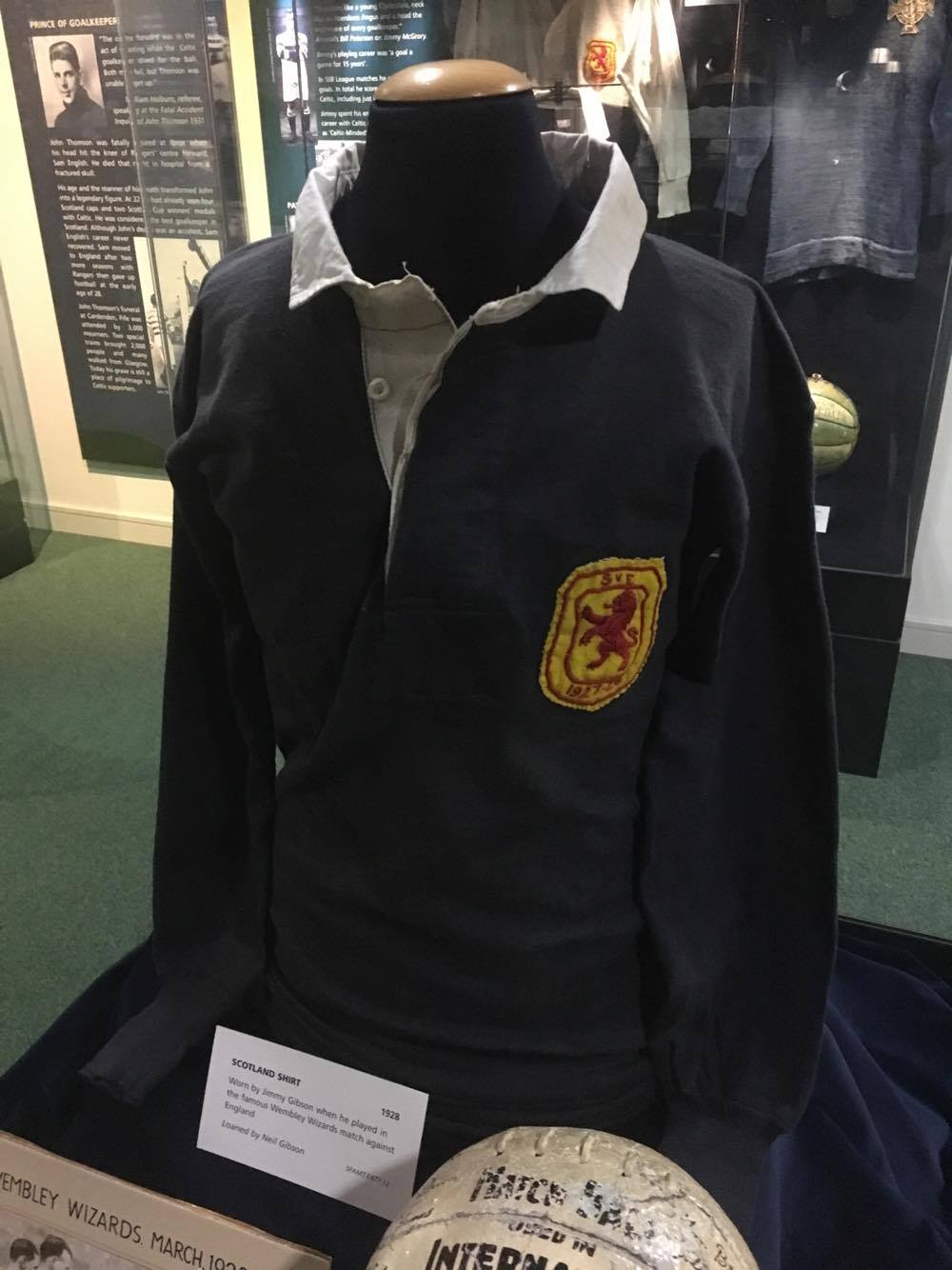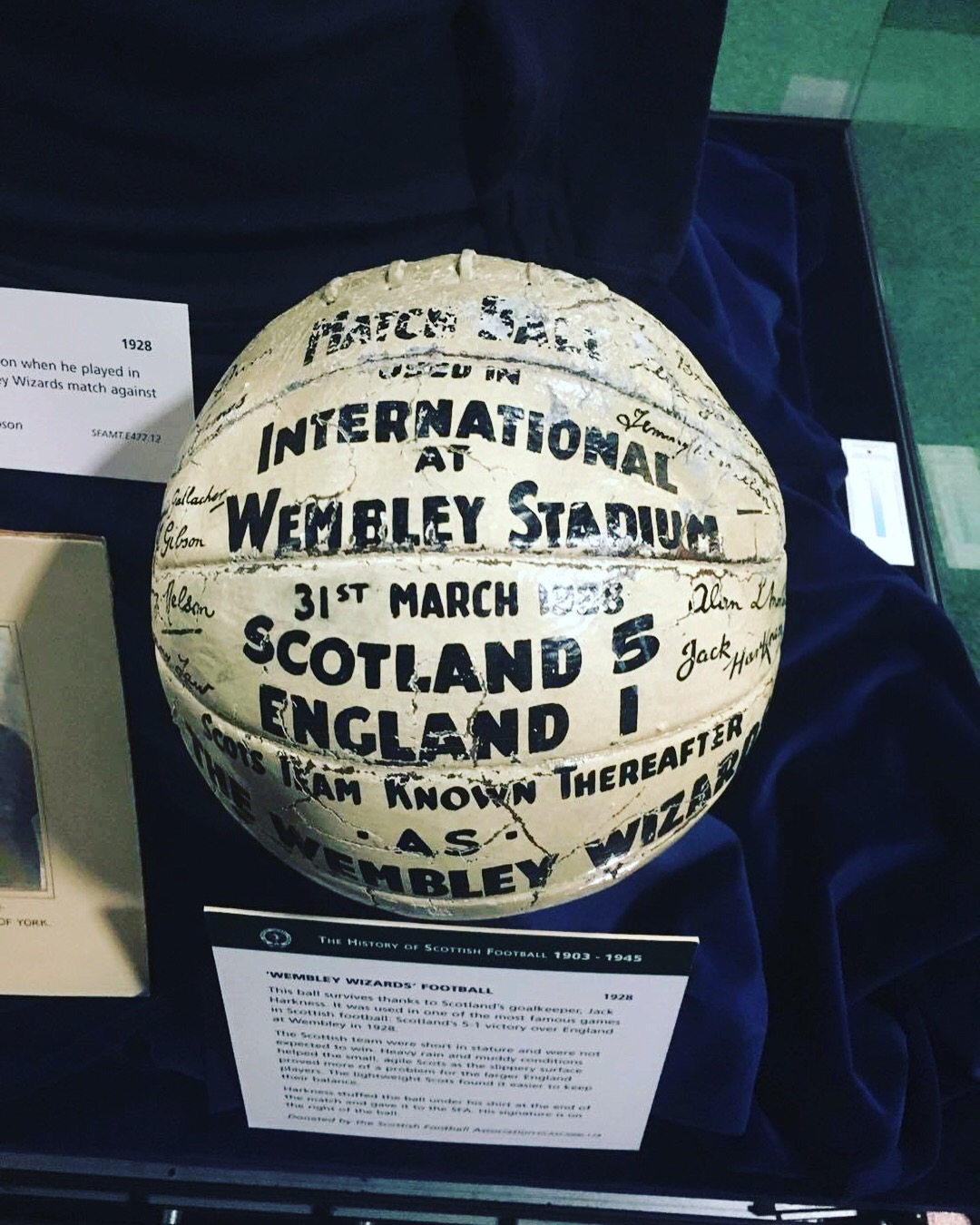The Wembley Wizards of 1928
As the footballing world already knows, Scotland v England was the very first international football fixture back in 1872 at the West of Scotland Cricket Ground.
Since then it has been a mouth-watering fixture for both sets of supporters.
Scotland throughout the twentieth century have had great success in the Auld Enemy’s back yard. The first one which springs to supporters minds is 1967 when Jim Baxter, Denis Law and co beat the then world champions 3-2. The team of 67 are often referred to as the ‘Wembley Wizards’, yet these men were not the first to be referred as the Wembley Wizards, that title was handed to another famous eleven back in 1928.
Ninety years ago, the Scotland national side were on international duty in the British Home Championships. At this point in history, Scotland were settled into their now home Hampden Park- as were England at Wembley Stadium. Though Scotland had suffered a couple of set backs early in the year. One was a defeat to Ireland at Firhill where Jock Hamilton of Blackburn Rovers conceded an early goal during the game. It was only Ireland’s second ever win on Scottish soil. Another aspect which had dented moral in the Scotland camp was the Scottish League suffering from a heavy 6-2 defeat from the English League at Ibrox. The clash with England, for many, was nearing at the worst possible time.
Back then, it was a selected Committee that picked the Scotland team, before the appointment of Scotland’s first ever manager, Andy Beattie, in 1954. There was huge speculation the Committee were very concerned about a possible heavy defeat; so majority of the players picked were Anglo Scots; with only three that actually played in Scotland. A few players who featured in the Ireland match did not get called up for the Wembley clash; figures such as Jimmy McGrory and Davie Meiklejohn were left out completely causing anger amongst the club supporters. Though the committee did pick a strong batch of Anglo Scots on fine form such as Alex Jackson of Huddersfield Town and Hughie Gallacher of Newcastle United.
One of the Scottish based players was Rangers’ tricky winger Alan Morton. Who would play arguably his best ever game for Scotland in this clash against the Auld Enemy.
The general mood before the game was filled with such pessimism, Scotland had lost the previous year to England at Hampden- their first win on Scottish soil since 1904. The team were billeted in the Regent Palace hotel, popular with the Scotland fans, and they stayed in the lounge chatting with supporters till 10pm, when the President of the SFA, Robert Campbell, suggested that team captain, Jimmy McMullan take the players upstairs for a pep talk. The talk was short and to the point: “The President wants us to discuss football but you all know what’s expected of you tomorrow. All I’ve got to say is, go to your bed, put your head on your pillow and pray for rain.”

The Scottish players meet the Duke of York before the match.
The game was watched by a strong 80,868 crowd and the players’ prayers must have been heard for rain was falling from the heavens. Yet, this did not dampen the oldest international football fixture in the world. Expectations and battle-cries continued as normal, leading Scotland keeper, Jack Harkness, to feel faint causing him to lean against a post until he recovered his composure. The game itself was being played at incredible tempo. Normally a game such as this being similar to a cup final has both teams taking time to find their rhythm. England however hit the post in the opening minutes of the first half but play swung to the other side where a fast low cross from Alan Morton found Alex Jackson’s head putting Scotland 1-0 up.
Despite McMullan’s wish for rain, England-as well as Scotland- were producing some fantastic football. Harkness was probably the busier keeper in the first half. It is an old cliche to say ‘the best time to score is right before half time’, as it offers a sucker punch to the opposition’s half-time analysis and discussion. Indeed, Scotland did just that when Alex James played a nice one-two with Jackson before firing a low hard shot outside of the box. 2-0 to the men in navy blue.
The second goal seemed to generate more confidence into the players. England seemed deflated and knew Scotland’s nippy forwards were adapting very well to the poor weather conditions. The third goal was just the same as the first; Morton crossed into the box for Jackson to head home. A minute later Scotland scored again when good refereeing allowed advantage to be played when Gallacher was fouled outside the area, only for the ball to land at James’ feet to smash past the keeper.
Jackson then saw himself claim the match ball, completing a hat-trick when Morton found him in the box who only had to tap it in an empty net. The Scotland support were having a ball in the stands and were just about ready to even cheer Bob Kelly’s consolation strike on the final whistle. 5-1 the full-time score

Jimmy Gibson’s Scotland jersey from the match on display in our Museum.
The secret to this success was all down to the attacking players. Captain McMullan took time out of the celebrations to share in a post match interview, “I want to emphasise that all our forwards are inherently clever,” he said. “But I wish to say that the English tactics were wrong. The Saxon wing-halves paid more attention to the wingers than the inside forwards – therefore the latter were given a lot of space. It is a common thing in England to let wing halves, and not fullbacks, mark the wingers. It doesn’t pay and I don’t know why they pursue it.”
From then on in the legend of the Wembley Wizards was born, although, sadly, that 11 would never play together again. In fact, that rain-swept day in 1928 was to be Tiny Bradshaw’s only cap, despite a sterling performance marking the great Dixie Dean out of the game. This win at Wembley was to be well remembered, for the next meetings south of the border would end in heavy defeats. Morton realised this incredible score-line may never be repeated again, leading him to request to all of his teammates to sign a stadium plan of Wembley (which a while ago was on display in the Museum) knowing that one day it would be a very valuable piece of memorabilia.
Baxter, Law, McAlliog et al may be the entertainers of Wembley in 1967, making the world Champions England look very ordinary in their own backyard. However, they were never the original Wembley Wizards. The Wembley Wizards of 1928 will always be remembered helping Scotland record one of our greatest ever results. A match where fast-flowing football and skill from the first whistle completely bewildered the men in white in their own backyard.

The match ball from the game played at Wembley on display in our Museum.
Book your place
Discover a national football collection to educate and inspire future generations.
Book online or call us today on 0141 616 6139.
Tickets from £8
Tours from 45 minutes

